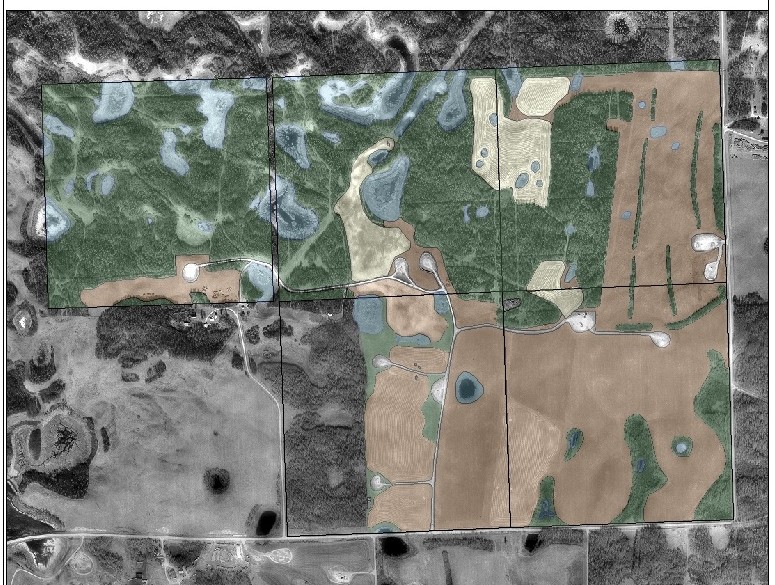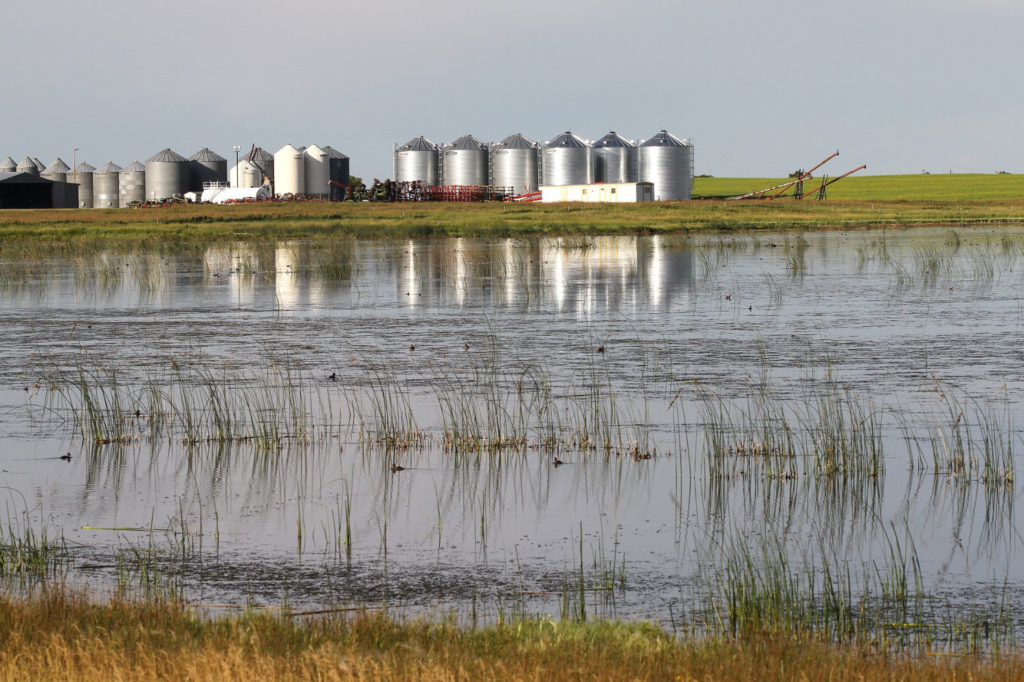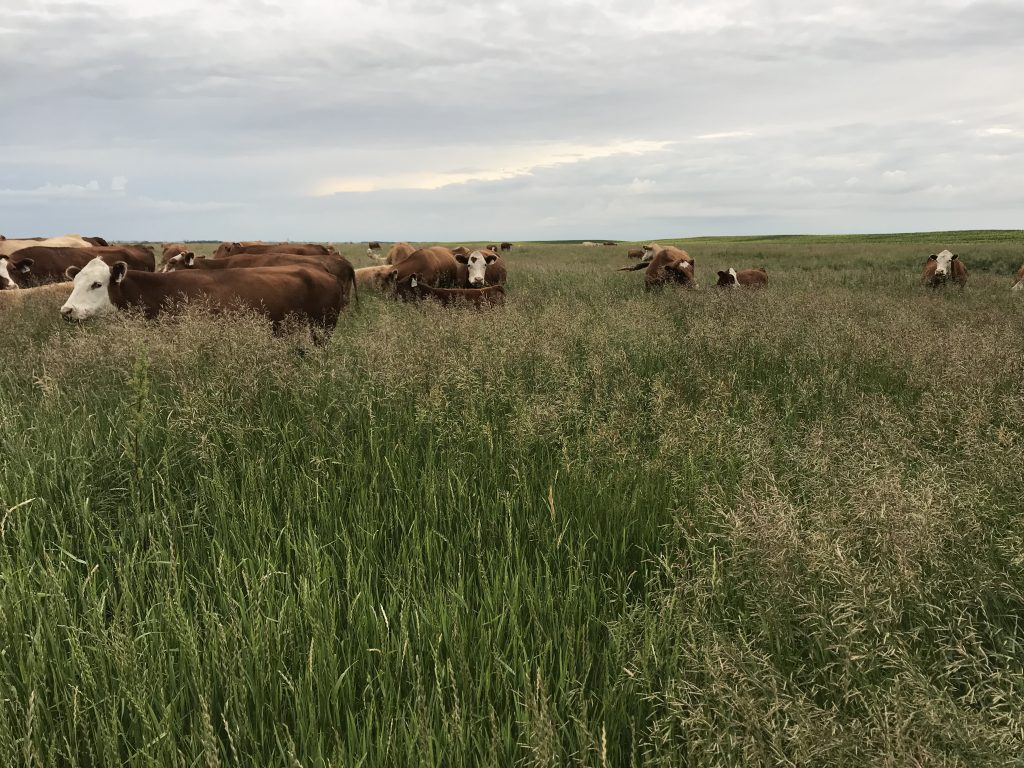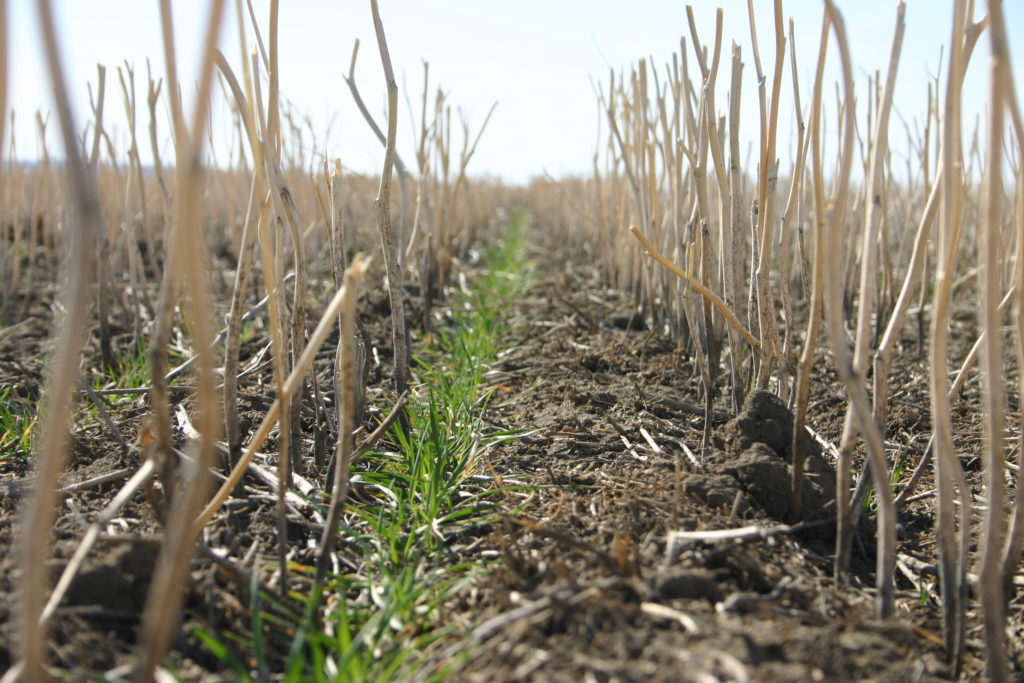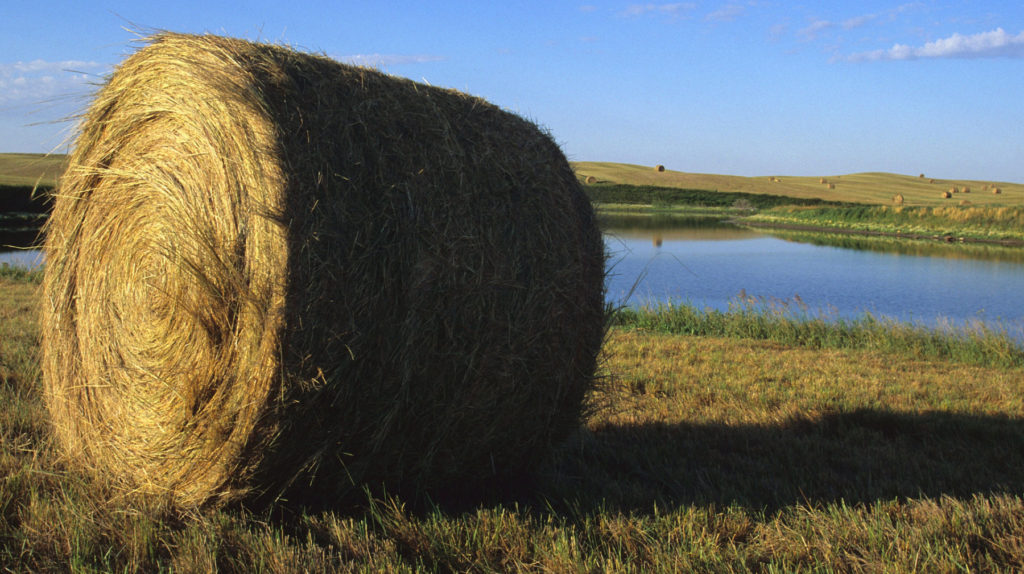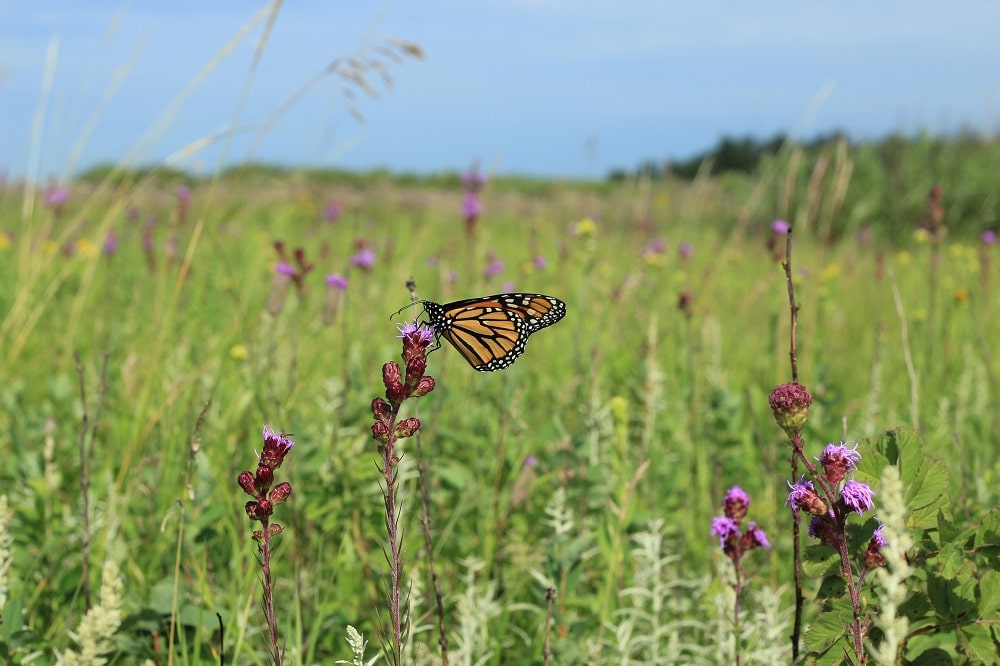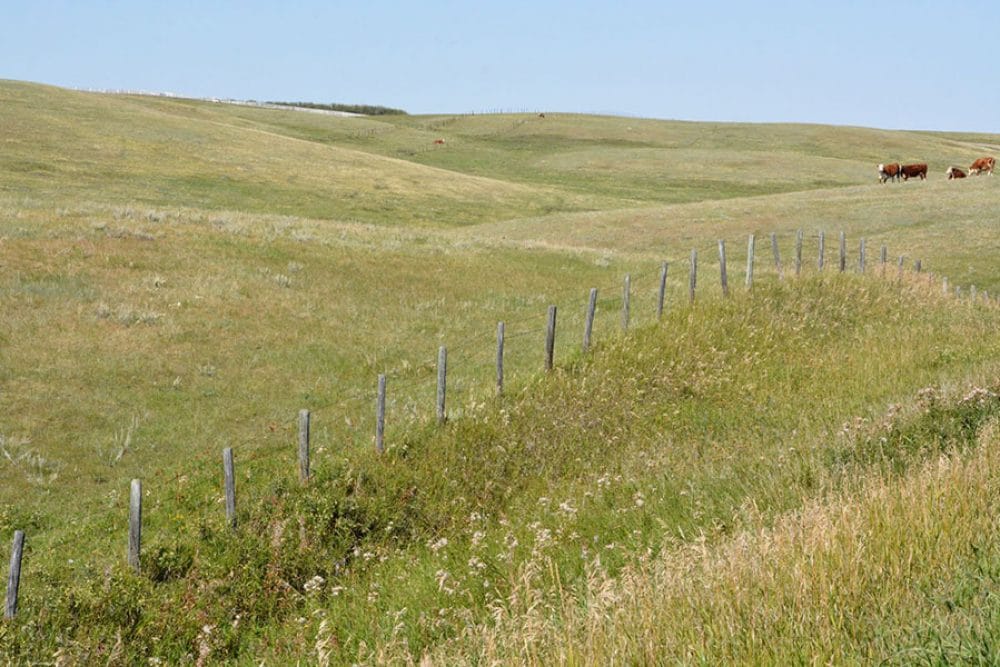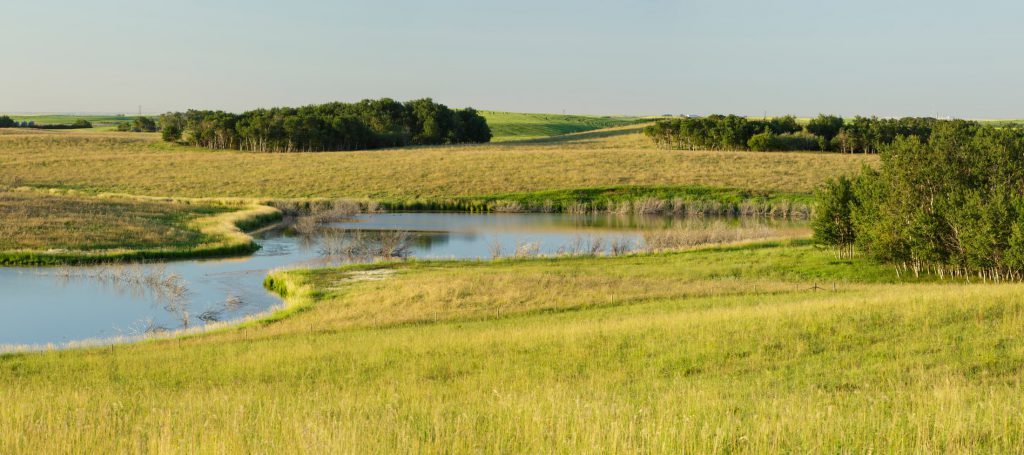Our team of agrologists brings over a century of education and experience to Saskatchewan’s hardworking farms and ranches. By spearheading and participating in Agriculture Demonstration of Practices and Technologies (ADOPT) projects and other research trials, we’re on the leading edge of approaches that deliver innovation and profitability to Saskatchewan farm operations. And better yet, we’re bringing those ideas straight to the paddocks and pastures of our province.
Touchwood Hills Conservation Ranch
DUC’s Touchwood Hills Conservation Ranch (THCR) is a 2630-hectare (6500-acre) working ranch located among the rolling, pothole-rich landscape of Saskatchewan’s Touchwood Hills, roughly 90 minutes northeast of Regina. For over a decade, it’s been the site of extension and applied research relevant to ranching and conservation communities.
THCR allows cross-sector partners to research agricultural practices and identify solutions equally beneficial to farming and conservation. Initiatives currently underway demonstrate the application and promise of new technologies in livestock ranching, like virtual fencing, forage seeding and vegetation control using unmanned aerial vehicles, and alternative pasture management approaches that optimize forage productivity, carbon storage and biodiversity.

THCR’s success stems from the knowledge and involvement of area ranchers as well as partnerships with the Canadian Forage and Grassland Association, Living Lab Central Prairies, Birds Canada, Canadian universities, and others.
Virtual Fencing Demonstration Project
Ducks Unlimited Canada and the Canadian Forage and Grassland Association have partnered to do the hard learning around the feasibility of adopting virtual fencing at scale on Saskatchewan ranches.
Recently, 23 replacement heifers and a bull got some e-collar bling as part of an ongoing DUC-CFGA demonstration project in central Saskatchewan. These collars are part of Gallagher’s virtual fence product and represent the first use of the eShepherd technology in our province.
Virtual fencing uses GPS-enabled collars to guide livestock without physical barriers; when an animal crosses a pre-set digital boundary, its collar emits an auditory alert followed by a mild electrical shock.
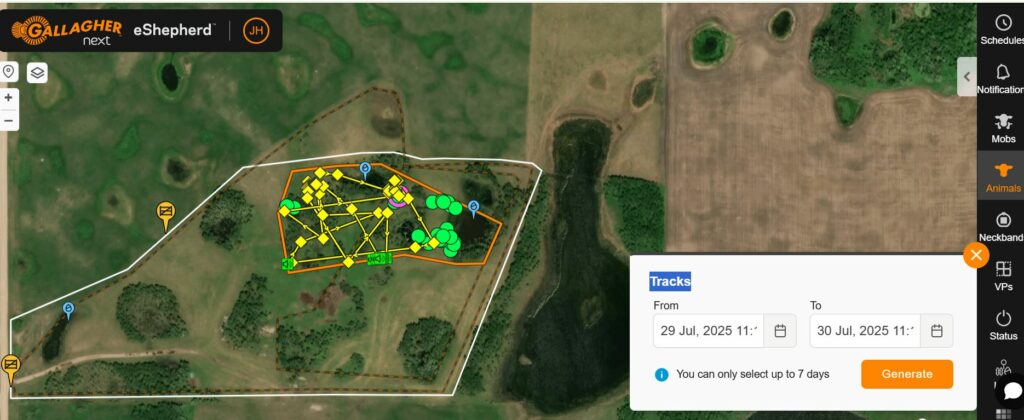
Screen grab from Gallagher’s eShepherd interface. Orange outline is the digital pasture boundary, green sound icons illustrate where animal encounters boundary and changes course before receiving a shock.
There are lots of potential applications for this exciting new technology. It offers nearly unmatched possibilities when it comes to targeted grazing, allowing ranchers to manage animal movement remotely via computer or smart device.
Want to stay in the loop? Sign up to receive news of future virtual fencing demonstration days, funding opportunities and more.
Ducks Unlimited Canada uses cookies to gather data from our subscribers to provide a better user experience on the Ducks Unlimited Canada website (ducks.ca). By submitting this form, you consent to Ducks Unlimited Canada collecting web activity data when you visit ducks.ca or canards.ca. Ducks Unlimited Canada is committed to protecting your privacy and will never share or sell this information. For more information, check out our cookie policy and privacy policy.

